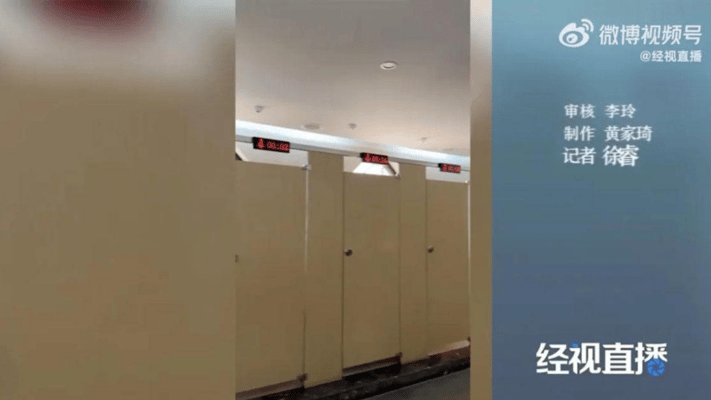China's UNESCO Heritage Site Installs Toilet Timers

China's Yungang Buddhist Grottoes, an awe-inspiring attraction featuring 51,000 statues carved into 252 caves and niches over 1,500 years ago, is gaining attention for an unexpected reason: its restroom facilities.
A video circulating on Chinese news and social media shows timers installed above toilet cubicles in a female washroom at the UNESCO World Heritage site. Each stall has its own digital counter, displaying "empty" in green when unoccupied and the duration the door has been locked when in use.
The video, originally recorded by a visitor and sent to the Xiaoxiang Morning Herald, has sparked a mix of admiration and concern. "I found it quite advanced technologically so you don't have to queue outside or knock on a bathroom door," the visitor said. "But I also found it a little bit embarrassing. It felt like I was being monitored."
According to a staff member quoted by the Xiaoxiang Morning Herald, the timers were installed to manage the increased number of visitors. "They aren't there to control the durations you could use the bathrooms," the staff member explained. "It's impossible that we would kick someone out midway. And we aren't setting a time limit such as five or ten minutes of how long one could use the toilets."
The Nanchang Evening News reported that the timers, operational since May 1, are primarily a safety measure. "It's ensuring the well-being of all guests, in case some guests use the toilet for an extended period and an emergency occurs," said a park staff member.

The timers have ignited debate on China's social media. Some users on the popular platform Weibo support the innovation, arguing it discourages prolonged phone use in the stalls. "A tourist site isn't an office—who would spend their time in the toilets? Is it really necessary?" one user commented. Others suggested the money could be better spent on building more restrooms.
Yungang Buddhist Grottoes, located in Shanxi province, is one of northern China's premier tourist destinations. Recognized as a UNESCO World Heritage Site in 2001, it set a record with three million visitors in 2023, a significant increase from its previous high of 1.98 million in 2019.
In addition to restroom upgrades, the site has introduced new shows and mini attractions to enhance its appeal to visitors.
China's Yungang Buddhist Grottoes, an awe-inspiring attraction featuring 51,000 statues carved into 252 caves and niches over 1,500 years ago, is gaining attention for an unexpected reason: its restroom facilities.A video circulating on Chinese news and social media shows timers installed above ...
China's Yungang Buddhist Grottoes, an awe-inspiring attraction featuring 51,000 statues carved into 252 caves and niches over 1,500 years ago, is gaining attention for an unexpected reason: its restroom facilities.
A video circulating on Chinese news and social media shows timers installed above toilet cubicles in a female washroom at the UNESCO World Heritage site. Each stall has its own digital counter, displaying "empty" in green when unoccupied and the duration the door has been locked when in use.
The video, originally recorded by a visitor and sent to the Xiaoxiang Morning Herald, has sparked a mix of admiration and concern. "I found it quite advanced technologically so you don't have to queue outside or knock on a bathroom door," the visitor said. "But I also found it a little bit embarrassing. It felt like I was being monitored."
According to a staff member quoted by the Xiaoxiang Morning Herald, the timers were installed to manage the increased number of visitors. "They aren't there to control the durations you could use the bathrooms," the staff member explained. "It's impossible that we would kick someone out midway. And we aren't setting a time limit such as five or ten minutes of how long one could use the toilets."
The Nanchang Evening News reported that the timers, operational since May 1, are primarily a safety measure. "It's ensuring the well-being of all guests, in case some guests use the toilet for an extended period and an emergency occurs," said a park staff member.

The timers have ignited debate on China's social media. Some users on the popular platform Weibo support the innovation, arguing it discourages prolonged phone use in the stalls. "A tourist site isn't an office—who would spend their time in the toilets? Is it really necessary?" one user commented. Others suggested the money could be better spent on building more restrooms.
Yungang Buddhist Grottoes, located in Shanxi province, is one of northern China's premier tourist destinations. Recognized as a UNESCO World Heritage Site in 2001, it set a record with three million visitors in 2023, a significant increase from its previous high of 1.98 million in 2019.
In addition to restroom upgrades, the site has introduced new shows and mini attractions to enhance its appeal to visitors.










Leave a Comment